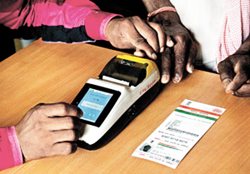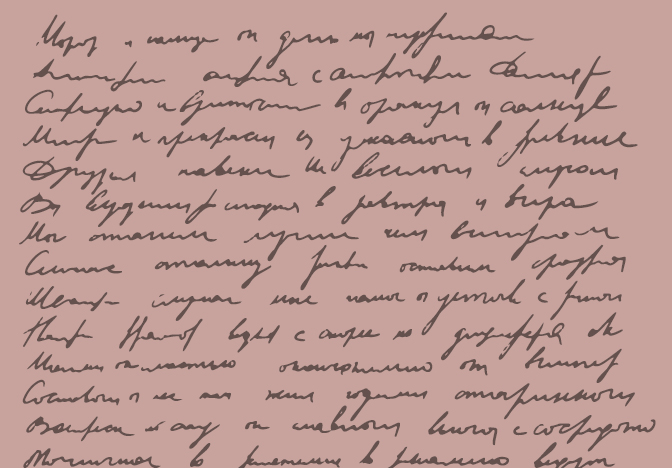“Everything comes to us that belongs to us if we create the capacity to receive it.”
– Rabindranath Tagore
India has a population of 1.2 billion, 20-30% of which live below the poverty line.[i] From food to kerosene, to fertiliser, the government spends some 2% of the GDP on subsidies, but the system has long been plagued by corruption, manipulation and administrative inefficiencies. Some estimate that 71% of the 20 billion rupees the government spent on grain subsidies in 2004-05 was lost due to theft and waste and only 10% reached the poor.[ii] While each household was entitled to 35kg of subsidised grains a month, or about 7 kg per head, in fact they only took up 1kg per capita on average. But things are changing. Information technology is transforming the way in which government services and welfare are delivered in a major way.
Leakage in the TPDS – What Kept the Finance Minister Awake at Night[iii]
Under India’s Targeted Public Distribution System (TPDS), the central government procures grains from farmers at market or above-market prices (to incentivise production), allocates them to the states based on the number of eligible households identified, and sells the grains at subsidised prices. The grains are first transported to depots operated by state governments, who then distribute them to licensed ration shops (aka fair price shops). Grains are sold by ration shops to beneficiaries with ration cards at subsidised prices.
The first major problem for the TPDS is the misclassification of poor households as non-poor and vice versa, resulting in nearly 61% error of exclusion and 25% inclusion of beneficiaries.[iv] The second issue is “leakage” in the distribution process, including losses during transportation to ration shops and diversion from ration shops into the open (or black) market. The Planning Commission found 36% leakage of TPDS grains at a nationwide level, with the worst offending states having a leakage rate as high as 75%.[v] Contributing to both problems are those that illegally claim subsidies under the false identity of existing or non-existing persons, notoriously known as “ghost” beneficiaries.[vi] Counterfeit paper ration cards are rampant as authentication and du-duplication is difficult… until the arrival of Aadhaar.
Aadhaar or UID – A New Dawn
In 2009 the government introduced an ambitious biometrics-based national identification program under which a central authority is mandated to collect demographic and biometric information from every Indian resident and to issue them with a unique 12-digit identification number (UID or Aadhaar). To ensure that UIDs “can be verified and authenticated in an online, cost effective manner, which is robust enough to eliminate duplicate and fake identities”, a multi-modal system was adopted which includes fingerprints and iris scans in addition to facial photographs. The inclusion of iris image data is said to provide three additional benefits: maximising inclusion among the poor (as fingerprints can fade with physical labour, thus becoming difficult to capture), enhancing security, and allowing children as young as five years old to be enrolled.[vii]Obtaining a UID is not mandatory, but more and more welfare transfers are tied to the system. As a result, 985 million individuals, or 77% of the nation’s population, have enrolled as of February 2016.[viii]
The Power of Digitisation and Biometrics
In conjunction with the UID program, 34 of India’s 36 states have digitised their databases of more than 240 million ration cards which now allow for online entry and verification of beneficiary data, from the number of dependents in a household to their monthly entitlements, to the amounts claimed from ration shops on each visit.[ix] At the receiving end, a system called Biometrically Authenticated Physical Uptake (BAPU) has been progressively adopted by the states, which requires a beneficiary to physically visit a ration shop and subsidised grains will be disbursed only after his or her identity is biometrically verified by the built-in fingerprint and iris scanners on the electronic Point-of-Sale (ePoS) device. The machine displays the quota of subsidised grains the beneficiary’s household is entitled to and, being connected to an electronic scale, automatically records the quantity disbursed. It prints receipts, but also makes an audio announcement of every step of the transaction so that even the illiterate is informed.

Source: http://competitiontime.in/?p=927
Other technology-based reforms include computerised grain allocation to allow transactions and stock balance to be electronically tracked and recorded, equipping delivery trucks with GPS technology to track their movements, and notifying beneficiaries of despatch and arrival of subsidised grains through SMS. All these measures are curbing theft and misappropriation by ration shop operators who used to short-change beneficiaries or keep their stores closed so as to later sell unsold subsidised grains in the black market.
The results have been remarkable. A district with 2,100 automated ration shops estimated a 30% saving to its food subsidy bill as a result of de-duplication of ghost ration cards and reduced diversion.[x] With the Finance Minister’s plan to automate 300,000 of India’s 353,000 ration shops over the next 12 months, imagine the savings it will bring to a country whose food subsidy bill cost US$20 billion in 2014 and accounted for 18% of its fiscal deficit.[xi]
The JAM Trinity
Aside from BAPU, the Modi government has a broader and further-reaching agenda for improving financial inclusion through UID and technology. Dubbed the “JAM Trinity” (Jan Dhan Yojana (Hindi for “People Money Scheme”), Aadhar and Mobile), the scheme aims to help every Indian citizen to have a bank account and become part of the financial network. It facilitates the delivery of welfare to the people through direct funds transfers, and the benefits extend beyond subsidised goods to include loans and life insurance.
125 million people reportedly had an account opened within 100 days of the launch of the scheme.[xii] A staff member at the Commonwealth Bank told Platinum that, thanks to UID, their branches in India are able to open a new client account in just 47 seconds. Direct transfers were adopted for the residential cooking gas (LPG) subsidy program in 2014. Instead of paying the subsidised price in cash to the delivery man, customers now pay the market price while the government deposits the subsidy amount into their bank accounts. The government believes the transition eliminated nearly 55 million bogus accounts used to divert subsidised LPG to the black market. Together with the new online cylinder tracking system, the new measures contributed to a saving of US$2 billion.[xiii]
Notwithstanding these promising results, with the basic savings account penetration in most states still only at 46% on average, the JAM scheme faces significant last-mile challenges in getting the money from banks to beneficiaries’ hands.[xiv] Improving banking infrastructure in rural areas will be crucial.
From basic subsidies to access to education and scholarships, from greater financial inclusion to a more transparent voting process, the UID is at the foundation of a range of reforms taking place in India which are reducing corruption and fraud and making the country a more equitable and democratic society. Technology really is at its best when it enriches the poor and empowers the people.
DISCLAIMER: The above information is commentary only (i.e. our general thoughts). It is not intended to be, nor should it be construed as, investment advice. To the extent permitted by law, no liability is accepted for any loss or damage as a result of any reliance on this information. Before making any investment decision you need to consider (with your financial adviser) your particular investment needs, objectives and circumstances. The above material may not be reproduced, in whole or in part, without the prior written consent of Platinum Investment Management Limited.


